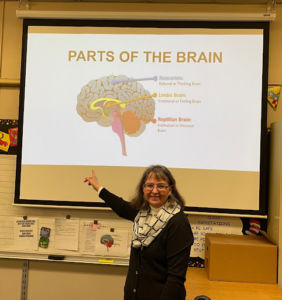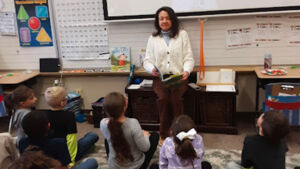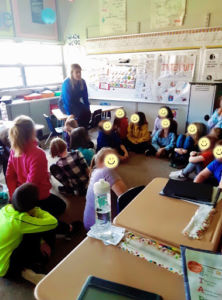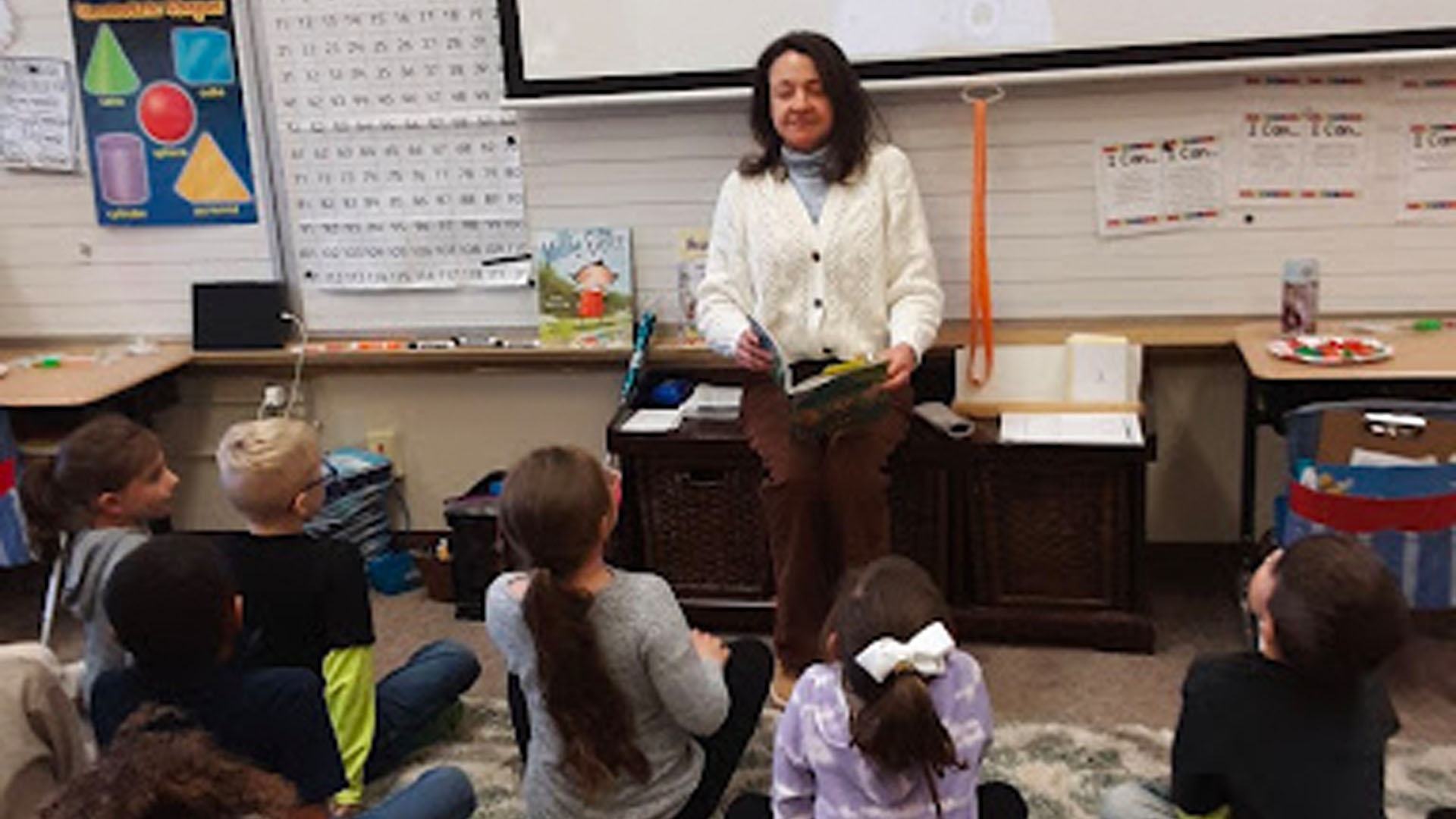This blog is the second part of a series that began in November of 2021 to chronicle the journey of building a trauma-informed school at Loper Elementary School in Shelbyville, IN. In the first part of the series, the following mindsets and components were explored:
- The three pillars of a trauma-informed school: felt safety, relationships, and regulation
- Having the full support of the principal
- Being curious
- The need for principals and educators to be open-minded and willing to change.

This blog will focus more on the nuts and bolts of building a trauma-informed school. As you start to build your trauma-informed program, it is important to understand that “you have to go slow to go fast.” Or an even better way to visualize this concept is in the words of Kyle Miller, SEL coordinator of Westfield Washington Schools: “You have to go slow to go far.” You need to be respectful of teachers. If you move too quickly, the teachers may turn away from implementing trauma-informed practices and your program will fail. Build your program one step at a time at a pace that teachers can handle along with their other responsibilities, and you will get to where you want your school to be. Another concept to keep in mind is that it takes about four years to create a trauma-informed school. So a slow and steady pace is the best way to build a successful program.
Knowledge
One of the most important parts of beginning this work is to help principals and staff understand the “why.”
- Why do students today need a school that is trauma-informed?
- Why does a trauma-informed approach help students?
- Why do I need to change?
The first place to start is with professional development to build this knowledge base. You need to provide statistics about the current status of students, such as the percentage of students who live in poverty, who witness domestic violence, who are physically abused, who are sexually abused, and who experience anxiety, depression, and other mental health disorders. In addition, educators need to understand how the pandemic has further impacted students. They also need to learn what social-emotional learning is and the research to show its benefit in helping students be successful at home, at school, and in life. Another important area of professional development is in understanding trauma and applied educational neuroscience. Principals and teachers need to know what the ACE study is, what the impact of trauma is, how trauma affects learning, and the signs that a student may have experienced trauma. They also need to understand how brain states affect learning. As Dr. Lori Desautels often says, “Brains in pain cannot learn.” Information needs to be given about how trauma affects brain development, about the fight-flight-freeze response, and ways to calm the nervous system. Professional development can be done in several ways:
- Presentations during staff meetings. Monthly presentations are best, but at least 3-4 a school year.
- Book studies. The selection of the book is very important. Books written by educators that focus on the school setting are better received by teachers. Book studies are more successful when teachers do not have the expense of purchasing the books themselves. The book that both of my schools used to get started with was I Wish my Teacher Knew: How One Question Can Change Everything for our Kids by Kyle Schwartz. The book selected needs to focus on the grade levels of your school. If weekly in-person discussions are not possible, set up a Google doc discussion in which participants journal about their learning from the book through shared Google documents for each chapter. One to two in-person discussions deepen the level of understanding.
- Sharing of articles and videos. There are great articles and short videos available from a variety of sources. Articles and videos can be shared through emails or a newsletter. A great resource to understand trauma-informed practices is the documentary, “Paper Tigers.” This is the landmark documentary which started the trauma-informed schools movement. Although the students are at the high-school level in this documentary, the practices are applicable to all grade levels.
Opportunities and Allies
Look for opportunities and allies in building the program. Some examples from Loper Elementary School are:
-

Mrs. Page, 1st grade teacher, leads her class in a calming activity using deep breathing.
A first-grade teacher mentioned that her students were so keyed up after lunch and recess that it was difficult to get any work done in the afternoon. I asked if she had tried any mindfulness practices. She said that she practiced mindfulness herself and had tried it in the classroom without success. I offered to come into her classroom twice a week to lead a mindfulness practice. With my social worker fund, I was able to buy her a focusing chime and the book, Breath like a Bear, by Kira Willey. After about a month, she was ready to continue the program on her own. - A third-grade teacher had a student whose family was going through difficult changes, and the student was showing distress at home when it was time to leave for school. Sometimes the distress carried over into the school day. The teacher and I decided that the student would visit the regulation room at the beginning of the day twice a week. As the student began to show improvement, the teacher mentioned that her class could use some calming activities. So I asked for the opportunity to come into the classroom to teach lessons about the brain and to do some calming activities.
- A teacher wrote on her exit ticket after the PD on trauma: “I wonder if we can create a team of teachers to help support our most fragile and needy students so that there is a constant support system for the kids and teachers who work with them.” So at the next PD, I read this exit ticket and several people agreed. I asked for people to volunteer. We are beginning our work to build an implementation team.
- One of the related arts teachers told me that he had been using breathing to calm himself when classes became difficult to manage and he had noticed that he is calmer and raises his voice less. He then asked, “But what can I do to help the students who come into the classroom so agitated?” I set up a Google folder of resources on mindfulness activities to use with students.
Any time a door is opened to try out a trauma-informed intervention, go through it. Ask for the opportunity to try something with a student or with a class. The teacher will become your ally. Recognize the teachers and other staff who are trying out new practices. Give them an opportunity to share during a staff meeting. Send out an appreciation email to all teachers about what someone is doing to implement a trauma-informed strategy. This recognition will help in several ways:
- When teachers in the building like using the practice, it builds up the validity of the program that you want to develop.
- Everyone loves to be recognized for the good work that they are doing. Efforts to recognize individual work builds up each educator and helps them be more open to helping their students.
- The recognition that educators receive also helps other teachers in the building step forward, wanting to be part of the good work that is happening.
When implementing programs, think about doing pilot projects first. At Loper, several teachers volunteered after the third PD in February to start holding morning meetings in their classroom. It is helpful to have resources already available when you anticipate a major move forward in program development. These resources will help the teachers implement the intervention and support them in their efforts. The teachers who start morning meetings will be the pilot project for implementing morning meetings in more classrooms next school year. These teachers will also become “the cheerleaders” for the whole-school program. Teachers may not always believe school counselors, social workers, or even principals about how something works, but they will definitely believe a fellow teacher!
Experiences
Provide time for teachers to experience the practices that you want to be part of your school program.

If you want to implement mindfulness practices in the classroom, do a mindful practice in a staff meeting so that teachers can experience the sense of calmness and relaxation that may one day benefit the students. If you want teachers to implement community circles, ask them to participate in an activity from the community circle plan. For example, play 1-2-3 Pop from Closing Circles: Fifty Ways to End the Day in a Positive Way by Dana Januszka. At the end of the PD, use the 1-2-3 Pop activity to have teachers share what they learned from the PD. Most teachers are not familiar with SEL interventions, so any opportunity for them to experience a game or strategy will deepen their understanding. And the foundation underlying all of this work is the principal. The principal and assistant principal need to be involved in all activities. They need to be reading the book, journaling on the Google doc, and sharing in the in-person discussions. They need to show their pride in teachers using new strategies. They need to participate in the experiential activities introduced in the PDs. And each step of the way, the principals need to reiterate that they want this intervention and that they are there to support their staff through the process of implementing trauma-informed practices. Even with full principal support and a willing staff, it is wise to anticipate some “bumps along the road” as you implement these strategies. Some “bumps” are expected, such as the system being drawn toward homeostasis, and some are unexpected, such as unintentionally “stepping on someone’s area” as your program develops. The third part of this blog, which will be available next fall, will address these “bumps” and how to minimize and cope with them.
Resources
Please login or register to claim PGPs.
Alternatively, you may use the PGP Request Form if you prefer to not register an account.



